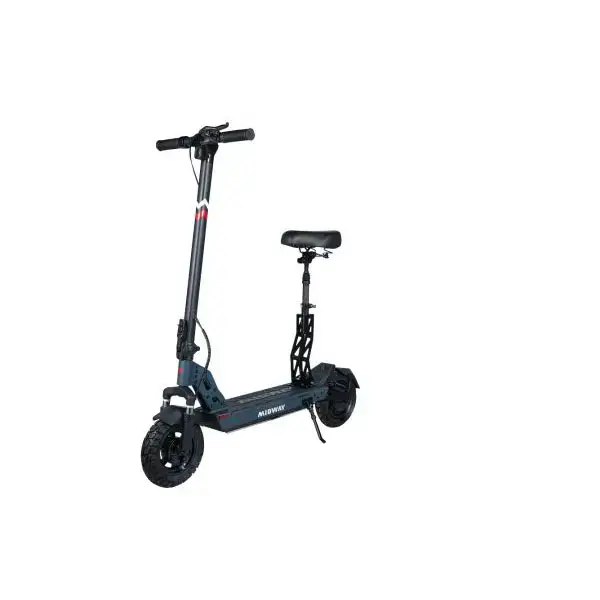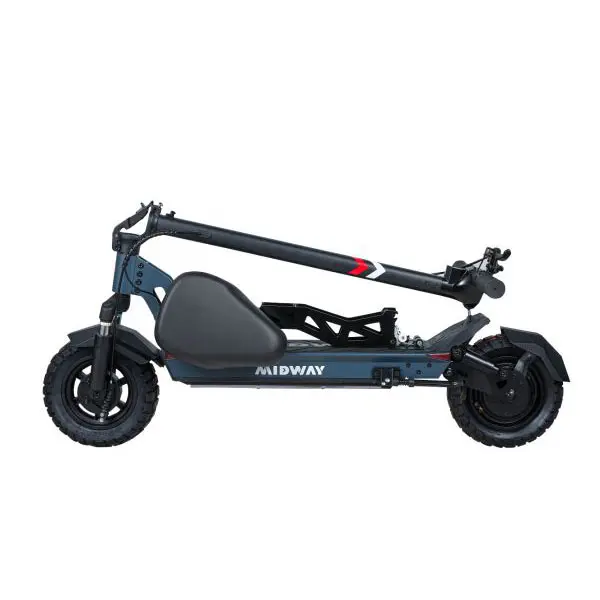What is the difference between the electronic brake system of electric scooters and traditional mechanical brakes?
What is the difference between the electronic brake system of electric scooters and traditional mechanical brakes?
1. Introduction
With the continuous development of the electric scooter market, its brake system, as a key part to ensure riding safety, has received more and more attention. Electronic brake systems and traditional mechanical brake systems are two common types on the market. They have many differences in working principles, performance, safety, maintenance costs, and applicable scenarios. This article will explore the differences between the two brake systems in depth to help you better understand and choose a suitable electric scooter brake system.
2. Working Principle
Electronic brake system: The electronic brake system does not rely on physical friction to brake, but instead achieves braking by generating reverse torque through the reverse rotation of the motor. When the user releases the accelerator or presses the brake button, the system sends a signal to the motor control unit to change the direction of the motor, thereby generating a torque opposite to the direction of the scooter's travel, causing the scooter to slow down or stop. In this process, the reverse rotation of the motor can also convert the energy generated during braking into electrical energy and store it in the battery, thereby increasing the range. This process is called energy recovery.
Traditional mechanical brake system: Traditional mechanical brake systems usually use disc brakes or drum brakes. Taking disc brakes as an example, it generates friction by clamping the brake disc on the wheel through the brake pad, thereby slowing down or even stopping the movement of the scooter. When the user steps on the brake pedal or pulls the brake handle, the mechanical force is transmitted to the brake caliper through the connecting rod, brake wire and other transmission devices, pushing the brake pad to close contact with the brake disc, generating friction to achieve braking. Drum brakes use the brake pad to squeeze the brake drum (similar to a small wheel) outward to generate friction to achieve braking.
3. Performance
Braking force: Mechanical brake systems are usually more direct and powerful in terms of braking force, especially when driving at high speed or emergency braking is required, and can provide more reliable braking effects. For example, when driving downhill or at high speed, mechanical brakes can more effectively control the speed of the scooter to prevent danger caused by insufficient braking. The braking force of the electronic brake system is relatively stable, but it may not provide sufficient braking force in some cases, especially when driving on large slopes or at high speeds, and may need to be used in conjunction with mechanical brakes to ensure safety.
Response speed: The response speed of the electronic brake system is faster because it controls the motor to achieve braking through electronic signals, and can respond quickly to user operations. The response speed of the mechanical brake system is relatively slow because it relies on the transmission of mechanical force and there is a certain delay.
Stability: The mechanical brake system has good stability in various environments and is not easily affected by external factors such as electromagnetic interference and power failure. The electronic brake system may be affected by electronic component failure, power supply problems, etc., resulting in brake failure or abnormality.

4. Safety
Failure risk: The mechanical brake system has a relatively simple structure and no complex electronic components and circuits, so the failure risk is relatively low. Even if a failure occurs, it is easier to be discovered and repaired. The electronic brake system relies on the electronic control system. Once the electronic components fail, the circuit shorts or the power supply has problems, the brake system may fail, increasing the risk of accidents.
Redundant design: In order to improve safety, some high-end electronic brake systems are equipped with redundant designs, such as backup power supplies, dual-circuit control systems, etc., to ensure that the braking function can still be achieved when the main system fails. The mechanical brake system can usually achieve redundancy through simple mechanical structures, such as dual brake pads, dual brake lines, etc., and the cost is relatively low.
5.aintenance cost
Daily maintenance: The mechanical brake system needs to regularly check and replace wearing parts such as brake pads and brake lines to ensure its normal operation. In addition, the brake system needs to be lubricated and adjusted to ensure the braking effect. In contrast, the maintenance of the electronic brake system is relatively simple, mainly the inspection and cleaning of some electronic components.
Maintenance cost: The maintenance cost of the mechanical brake system is usually low because of its simple structure, relatively mature maintenance technology, and it is easy for maintenance personnel to find problems and repair them. The maintenance of the electronic brake system may require professional electronic engineers, and the maintenance cost is high, especially when it comes to the replacement of key components such as electronic control units and sensors.
6. Applicable scenarios
Urban commuting: On urban roads, traffic conditions are more complicated, requiring frequent starts and stops and low-speed driving. The electronic brake system can provide a more comfortable riding experience in urban commuting due to its smooth braking force and energy recovery function, and it also helps to extend the scooter's cruising range.
Outdoor sports: For some outdoor sports scenes, such as mountain and off-road, scooters may face complex road conditions and large slopes. In this case, the mechanical brake system can provide stronger braking force and reliability to ensure the safety of riders in various terrains.
Logistics and distribution: In scenarios such as logistics and distribution that require long-term and high-intensity use, the stability and low maintenance cost of the mechanical brake system make it a more suitable choice. However, the electronic brake system may not be suitable for such a high-intensity use environment due to its complex electronic components and high maintenance costs.
7. Market Trends and Applications
Market Trends: With the continuous development of electric scooter technology and the improvement of consumers' requirements for safety performance, more hybrid brake systems that combine the advantages of electronic brakes and mechanical brakes may appear in the future. This hybrid system can automatically switch the braking mode under different working conditions, which not only ensures the reliability of braking, but also improves energy efficiency.
Application Cases: Some high-end electric scooter brands have begun to adopt advanced electronic brake systems and combine them with mechanical brakes as an auxiliary to improve the overall performance and safety of the product. For example, some models of electric scooters use electronic brakes on the front wheel and mechanical disc brakes on the rear wheel. The two braking methods work together through an intelligent control system, which can provide a smooth and comfortable riding experience on urban roads and provide strong braking force when needed.
8. Summary
There are significant differences between the electronic brake system of electric scooters and the traditional mechanical brake system in terms of working principle, performance, safety, maintenance cost and applicable scenarios. The electronic brake system performs well in scenarios such as urban commuting with its advantages such as fast response, energy recovery and low maintenance cost; while the traditional mechanical brake system has more advantages in outdoor sports and logistics distribution with its strong braking force, high stability and low failure risk. With the continuous advancement of technology, more innovative brake systems may appear in the future to provide stronger support for the development of electric scooters. For international wholesale buyers, understanding these differences will help them choose the right electric scooter brake system according to their own needs and application scenarios, so as to meet the requirements of different customer groups and improve market competitiveness.

9. (FAQ)
Q: Can the electronic brake system provide sufficient braking force in all situations?
A: The electronic brake system can provide smooth braking force in most cases, but it may not provide sufficient braking force when driving on a large slope or at high speed, so it is usually used in conjunction with mechanical brakes to ensure safety.
Q: How long is the maintenance cycle of the mechanical brake system?
A: The maintenance cycle of the mechanical brake system depends on the frequency of use and environmental conditions. Generally speaking, it is recommended to check the wear of the brake pads every 3-6 months and replace them as needed. At the same time, the brake lines and brake calipers should be lubricated and adjusted regularly to ensure their normal operation.
Q: Does the electronic brake system require professional maintenance?
A: Yes, the electronic brake system usually requires professional electronic engineers or trained technicians to repair it because it involves complex electronic components and control systems. Self-disassembly or repair may cause system failure or safety hazards.
Q: What factors should be considered when choosing an electric scooter brake system?
A: When choosing an electric scooter brake system, factors such as usage scenarios, riding needs, safety, maintenance costs, and personal preferences should be considered. For example, if you often ride on urban roads, the electronic brake system may be more suitable; if you often do outdoor sports or need to use it under complex road conditions, the mechanical brake system is more reliable.
Q: What is the development direction of the electric scooter brake system in the future?
A: The development direction of the electric scooter brake system in the future may be intelligent and integrated. By introducing advanced sensor technology, artificial intelligence algorithms and vehicle networking technology, automatic optimization and fault warning of the braking system can be achieved. At the same time, a more efficient energy recovery system is developed to improve the endurance of electric scooters.














